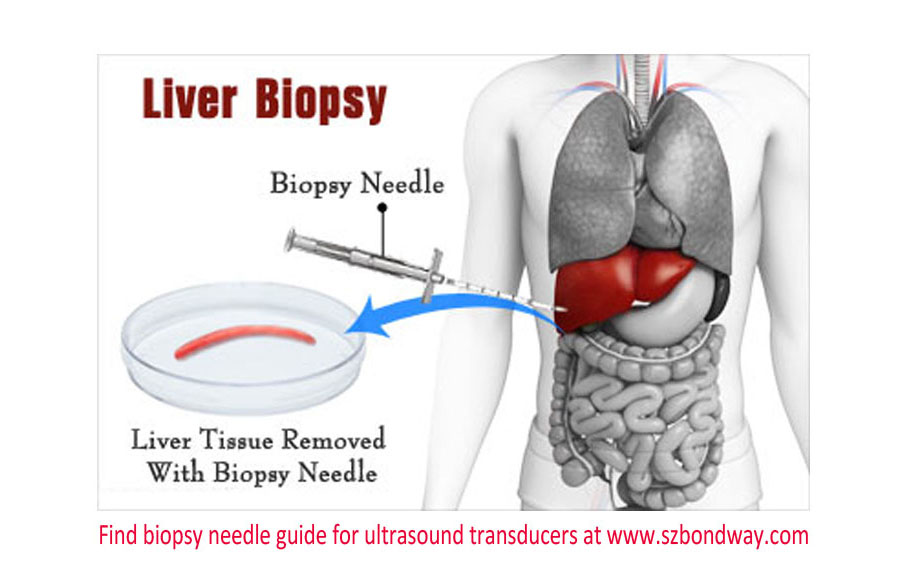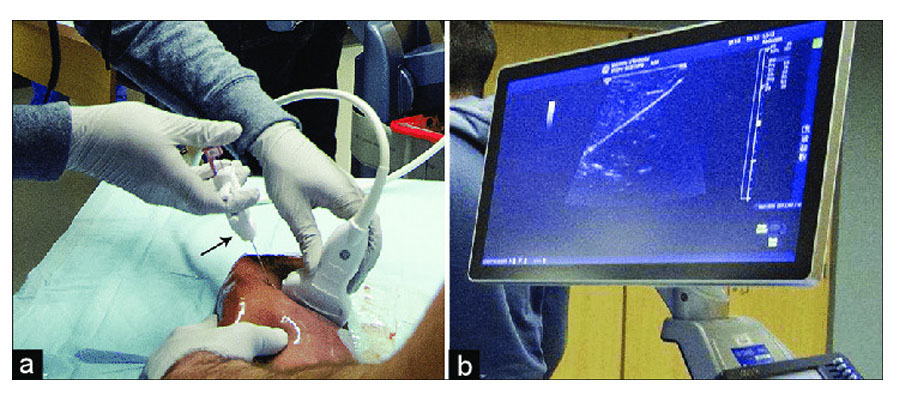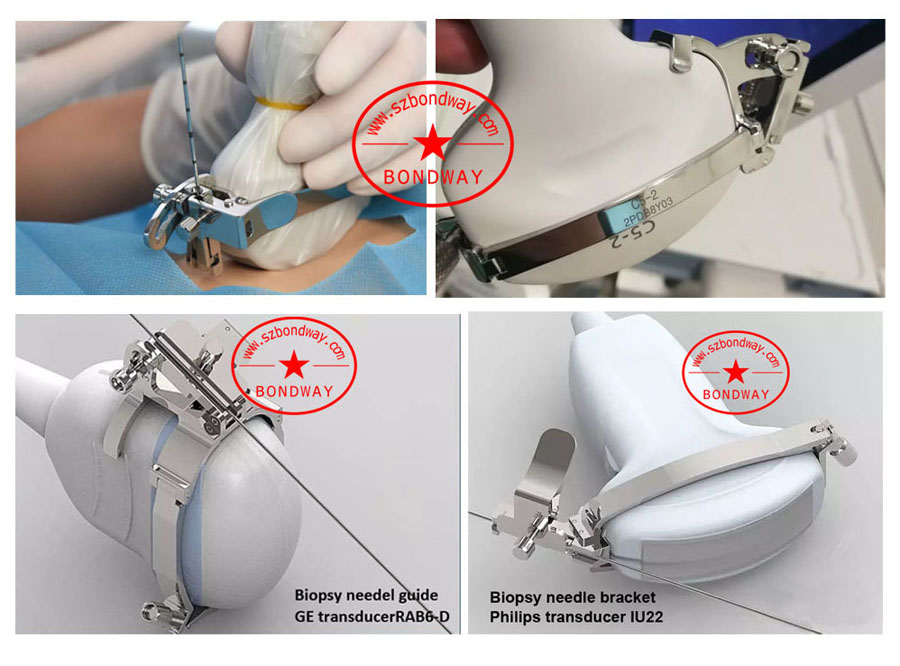What is a liver biopsy? (biopsy needle bracket for convex transducer)
A liver biopsy is a medical procedure in which a small amount of liver tissue is surgically removed so it can be analyzed in a laboratory.
Liver biopsies are usually done to evaluate disease, such as cirrhosis, or to detect infection, inflammation, or cancerous cells.

Your doctor may order a liver biopsy if blood or imaging tests indicate there are problems with your liver.
The liver is a vital organ. It does many things the body needs to function and survive, such as:
-
produces proteins and enzymes responsible for essential metabolic processes
-
removes contaminants from your blood
-
helps fight infection
-
stores essential vitamins and nutrients

Why a liver biopsy is performed?
Your doctor may order a liver biopsy to help them determine whether an area is infected, inflamed, or cancerous, or to diagnose the degree of liver damage.
Symptoms that a doctor would test for include:
- digestive system issues
- persistent abdominal pain
- right upper quadrant abdominal mass
- laboratory tests pointing to the liver as an area of concern
A liver biopsy is usually done if you received abnormal results from other liver tests, have a tumor or mass on your liver, or experience consistent, unexplainable fevers.
While imaging tests like CT scans and X-rays can help identify areas of concern, they can’t always give an exact diagnosis or determine the best treatments options. For this, you need a biopsy.
Although biopsies are typically associated with cancer, it doesn’t mean you have cancer if your doctor orders this test. Biopsies also allow doctors to see if a condition other than cancer is causing your symptoms.
Your doctor can use a liver biopsy to help diagnose or monitor a number of liver disorders. Some conditions that affect the liver and may require a biopsy include:
- alcoholic liver disease
- autoimmune hepatitis
- chronic hepatitis (B or C)
- hemochromatosis (too much iron in the blood)
- nonalcoholic fatty liver disease
- primary biliary cirrhosis (which leads to scarring on the liver)
- primary sclerosing cholangitis (which affects the liver’s bile ducts)
- Wilson’s disease (an inherited and degenerative liver disease caused by excess copper in the body)

How a liver biopsy is performed?
Just before the procedure, you’ll change into a hospital gown. Your doctor will give you a sedative through an intravenous (IV) line to help you relax.
There are three basic types of liver biopsies:
- Percutaneous. Also called an ultrasound-guided needle biopsy, this biopsy involves putting a thin needle through the abdomen and into the liver. Reusable biopsy needle guide (biopsy needle adapter or needle bracket) is usually used to help ultrasound locate the affected area and ensure the needle travel in the correct direction.
- Transjugular. This procedure involves making a small incision at the neck. A thin, flexible tube is inserted through the neck’s jugular vein and into the liver. This method is used for people who have bleeding disorders.
- Laparoscopic. This technique uses tube-like instruments that collect the sample through a small incision in the abdomen.
The kind of anesthetic your doctor gives you will depend on which type of liver biopsy they perform. The percutaneous and transjugular biopsies use local anesthetics. This means your doctor only numbs the affected area.
Laparoscopic biopsies require being under general anesthesia, so you’ll be in a deep sleep during the procedure.
When your biopsy is complete, your doctor will close any incision wounds with stitches and bandages. You’ll typically have to lie in bed for a few hours after the procedure while doctors monitor your vital signs.
Once you receive approval from your doctor, you are free to go home. Take it easy and rest for the next 24 hours. You should be able to get back to your normal activities after a few days.

Shenzhen Bondway Electronics Co., Ltd. has developed hundreds of reusable biopsy needle guide (also called biopsy needle bracket, biopsy needle adapter) suitable for abdominal convex array ultrasound probes (used for liver biopsy purpose, etc, compatible with most of the major existing ultrasound brands in the market.
We’re proud that an increasing number of hospitals and clinical centers at home and abroad are using our reusable biopsy needle brackets during their routine work. If you fail to find the biopsy needle guide for your ultrasound probes on our website, please do not hesitate to contact our sales staff, and we will upload newly developed products onto our official website periodically.

Shenzhen Bondway Electronics Co. Ltd
2020-8-4
 English
English
 中文
中文 Français
Français
 Español
Español Pусский
Pусский








